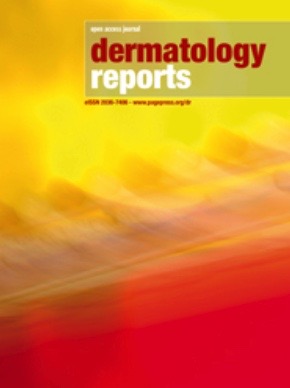Unusual site presentation of dermatitis herpetiformis: line-field confocal optical coherence tomography for effective management
All claims expressed in this article are solely those of the authors and do not necessarily represent those of their affiliated organizations, or those of the publisher, the editors and the reviewers. Any product that may be evaluated in this article or claim that may be made by its manufacturer is not guaranteed or endorsed by the publisher.
Authors
Dermatitis herpetiformis (DH) is an uncommon autoimmune blistering skin disorder linked to gluten sensitivity. This report describes the line-field confocal optical coherence tomography (LC-OCT) features in a DH case, correlating with histopathological findings. A 60-year-old man exhibited erythematous papules and vesicles on the trunk with itching and burning, alongside alternating bowel issues. LC-OCT revealed subepidermal hypo-reflective areas with hyper-reflective floating cells at the dermal papillae tips. Histopathology showed subepidermal vesiculation and neutrophilic microabscesses, confirmed by granular IgA deposits in the dermal papillae via direct immunofluorescence. The patient tested positive for anti-tissue transglutaminase antibodies, was referred to a gastroenterologist, and began dapsone treatment, resolving the skin lesions. LC-OCT findings were consistent with histopathology, supporting its utility in diagnosing DH. Despite clinical similarities between DH and other blistering disorders, LC-OCT offers a non-invasive diagnostic approach, aiding in identifying optimal biopsy sites and expediting treatment. Further studies are warranted to validate LC-OCT’s potential.
How to Cite

This work is licensed under a Creative Commons Attribution-NonCommercial 4.0 International License.








